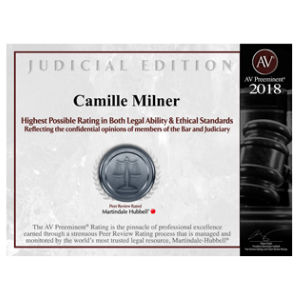
Why does Gray Divorce have its own category?
In part 1 of this series, we reviewed the evolutionary factors that have gotten us as a society to this phenomenon known as the “Gray Divorce.” So why does it have its own category? There are several reasons for that:
- People in the category of the “Gray Divorce” are typically Baby Boomers who want more out of life than just financial security; they want fulfillment in their lives and their relationships. When their marriage does not provide that, and they look at how much more lifespan they have, they question whether or not they should stay in that relationship.
- There are unique qualities in a “Gray Divorce.” Often, these couples have grown children and they want to maintain a good relationship with their soon to be ex-spouse, extended family, and mutual friends. They don’t want their “parents’ divorce,” which probably happend in a time before no-fault divorce. Their parents probably went to war in Court, saying horrible things about each other because, prior to the 1970s, the only way to get a divorce in many states was to prove serious fault by the other side, like adultery or abuse. As a resulte, the Baby Boomers have lived their lives with divorced parents who cannot be at the same function, let alone in the same room together. And divorcing Baby Boomers have clearly said they do not want their children to have live in that Cold War type atmosphere that their parents’ divorce forced them to live in.
- There are unique fears and concerns in a “Gray Divorce.” People in a “Gray Divorce” may be nearing the end of their professional careers and they know this is all the financial means that they will ever have, and now that is going to be divided, so will they be ok? Sometimes, one of the spouses stayed home with young children and as a result they have less financial knowledge and they are fearful they will not be able to survive financially moving forward alone. Sometimes it’s a health insurance concern: if one of the party’s health insurance is provided by the other party’s employer, that will change upon divorce – if they have health issues that concern is even heightened.
So, how can these fears be managed and a plan developed for both parties to move forward with financial stability and security?
In my experience, the best method for Gray Divorces is the Collaborative Divorce Process. In the Collaborative Divorce process, we give attention to all these concerns and needs. Here is how it works:
- We engage a team of professionals to address each component of the couple’s issue. At first blush, this might seem more expense, but it is not because each member of the team has a specific task, which will be explained below, and that gives efficiency to the process that saves the clients money.
- Each client has their own lawyer who serves as their advocate who will have confidential meetings with the client to help them explore their needs and goals and figure out the best way to achieve those. But the difference is that each party’s advocate will be using what is called “Interest-Based Negotiation” techniques. The Harvard Project on Negotiation and many other science-based negotiation studies show that both parties do better overall with interest-based negotiation rather than position-based negotiation, which wastes time and money fighting rather than solving problems.
- The neutral financial professional helps the clients pulled all their financial information together and compose a joint Inventory and Appraisement of all their property and liabilities. With nearly everything having a papertrail, the financial professional is best equipped to locate any forgotten assets or liabilities so that parties can be confident that their entire estate has been brought into view. And they help the individual clients develop their own post-divorce budget (many clients have never learned how to do this) so that they understand what they need month-to-month and long-term, which enables them reach a settlement that will give them financial security and stability for the future.
- The neutral mental health professional serves as a communications coach because if the clients get angry and have no way to manage that anger, their ability to logically think and commmunicate stops, and that results in inefficiency and costs more money. In the Collaborative Process, one of our highest goals is to give you efficiency and save you money while accomplishing what needs to get done.
- Together, these team members divide the duties to work together and with the client to most efficiently gather information, process it, develop and consider options, then reach a satisfactory resolution that the couple can agree to and move forward successfully and with as little emotional damage to them and their other relationships.
The “Gray Divorce” (couples over 50) is the largest demographic for divorces in the 21st century.
They have special needs and goals that are different than any other group. In the opinion of this author, the Collaborative Divorce Process provides the best method for serving that population.











